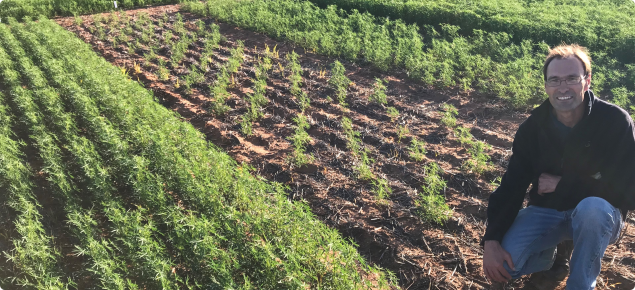Start date: 04/04/2022
Finish date: 05/07/2027
Description:
Using a multi-disciplinary farming systems research approach, this project will address system break options that deliver improved profit and acceptable risk. It will include a thorough analysis on the opportunities and risk of changing the timing of seeding and an analysis of management options for maintaining profitability under low greenhouse gas emission scenarios.
The approach includes field trials, on-farm research and monitoring, grower and industry participation, and whole farm economic and biometric modelling.
Research trial activities are being conducted at three regions representing different production environments across the WA grainbelt: medium rainfall north (led from Geraldton), low rainfall (led from Merredin) and medium rainfall south (led from Katanning).
In 2023 a total of 15 field trials spanning from Ogilvie in the north to Wittenoom Hills in the south were conducted. These included establishment of 3 large systems trials which will continue until 2027, a species x time of sowing trial, 8 vetch variety and end use trials and 3 trials investigating the legacy effect on wheat of a range of pulses, cereals and oilseeds.
The systems trial sites include over 40 treatments to compare different rotations, including wheat, barley, lupins, canola, pasture, vetch, serradella and fallow, sowing times and nitrogen rates.
Yield, soil nutrients, water use, weeds, disease and greenhouse gas emissions will be considered to compare the different rotations.
Results will combine with whole farm economic modelling to address the following questions:
- Are financial risks and/or greenhouse gas emissions reduced within WA cropping systems by reducing nitrogen inputs and diversifying rotations?
- How does water use efficiency and nitrogen use efficiency of cereals change relative to each other due to altered rotations, reduced fertiliser nitrogen and their interactions?
- What strategies can be used to increase profit across the rotation while managing weeds, diseases, soil fertility and risk?
More information about this project and a detaild 2023 field trial report can be found on the project website Western Australian Farming Systems project
Funding partner:
GRDC
Project code:
DAW2204-003RTX

